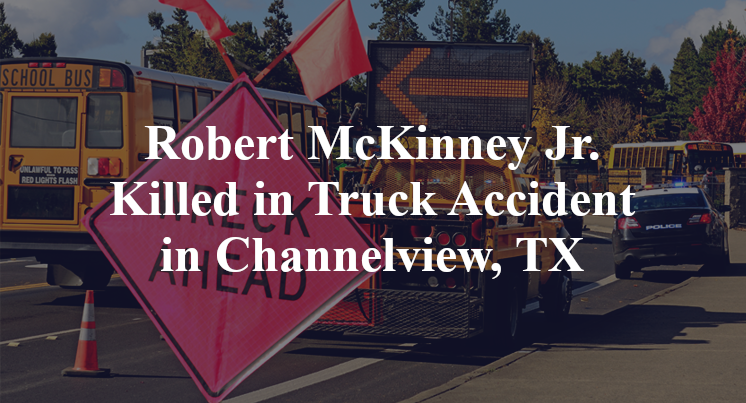Robert McKinney Jr. Killed in Truck Accident in Channelview, TX
Harris County, TX — June 26, 2025, Robert McKinney Jr. was killed due to a truck accident at approximately 11:10 p.m. along East Freeway.
According to authorities, Robert McKinney Jr. was traveling in a westbound Toyota Prius in the outside lane of East Freeway near Crockett Street when the accident took place.

A traffic attenuation truck was apparently parked in the far right lane with its sign and lights engaged. Officials indicate that, for as yet unknown reasons, the Prius collided with the rear-end of the truck.
McKinney reportedly sustained fatal injuries due to the wreck and was declared deceased at the scene. It does not appear that anyone else was hurt. Additional details pertaining to this incident are not available at this point in time. The investigation is currently ongoing.
Commentary by Attorney Michael Grossman
When a car crashes into the back of a parked traffic control truck—especially one with its lights and signs activated—the first impression might be that the driver simply wasn’t paying attention. But it’s rarely that simple. The real question in a case like this isn’t just why the car failed to stop, but whether the parked truck was placed in a way that gave other drivers a fair chance to avoid it.
Attenuator Trucks Are Designed to Be Seen—So Were They?
These trucks are outfitted with flashing lights, bright signage, and impact-absorbing bumpers specifically to reduce the danger of work zone collisions. But that only works if the truck is parked in a predictable, visible location, with enough distance for approaching drivers to react. If it was stationed in the live lane at 11:10 p.m.—a time when visibility and driver fatigue are already concerns—then questions need to be asked about whether all proper precautions were followed.
Critical points that must be clarified include:
- Was the truck parked in an active traffic lane or behind protective barriers?
- Were advance warning signs or cones placed far enough upstream to alert drivers?
- Was there sufficient lighting in the area to make the truck and its lights visible from a safe distance?
I’ve handled cases where impact trucks were technically compliant with regulations, but still set up in a way that gave drivers little or no chance to avoid a collision. Compliance doesn’t always mean safety—execution matters.
Driver Behavior Still Has to Be Evaluated
At the same time, rear-end crashes at night often involve distraction, fatigue, or impairment. If the Prius was traveling in a straight, open lane with a fully lit vehicle ahead and still didn’t slow down, that suggests the driver may not have been fully engaged with the road. ECM data from the car—if retrievable—can show whether there was any braking or evasive action in the final seconds. Cell phone records, dash cam footage, and toxicology reports can also shed light on the driver’s condition at the time.
But again, the legal question isn’t just whether the driver missed something—it’s whether the setup on the roadway gave him a reasonable chance to respond.
Key Takeaways:
- The impact vehicle was reportedly a traffic attenuator truck, but its exact position and setup on the roadway remain unconfirmed.
- Even properly marked trucks can pose a hazard if placed without adequate buffer zones or advance warnings.
- Visibility, lighting, and driver condition are all critical factors in rear-end collisions, especially at night.
- A thorough investigation must include vehicle data, roadway setup, and any available surveillance footage to determine whether the crash was avoidable.
- Responsibility depends not only on the driver’s attention but also on whether the work zone was managed in a way that prioritized safety.

“These are essential reads for anyone dealing with the aftermath of a truck wreck”– Attorney Cory Carlson